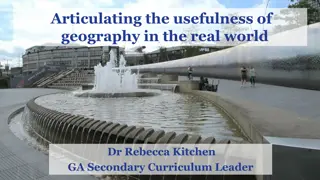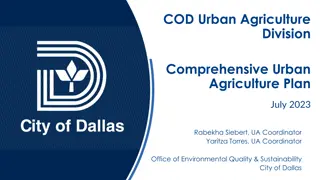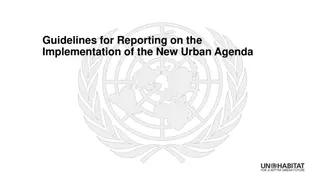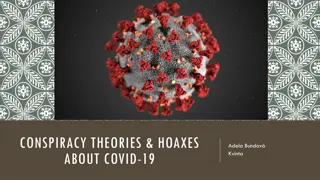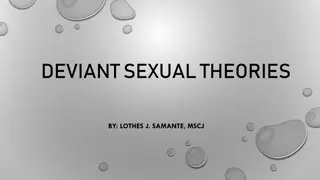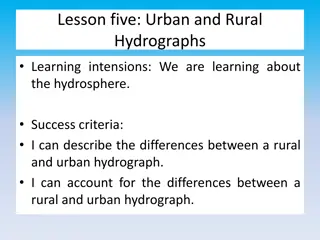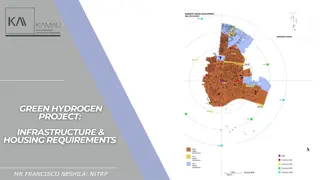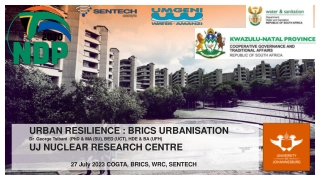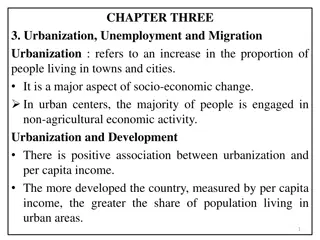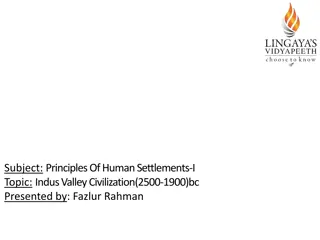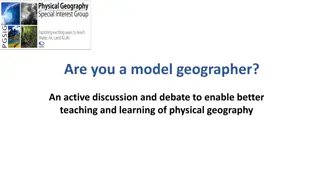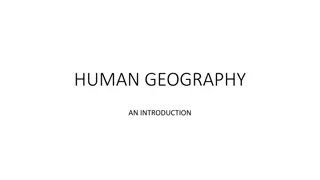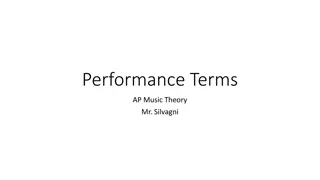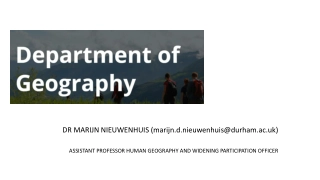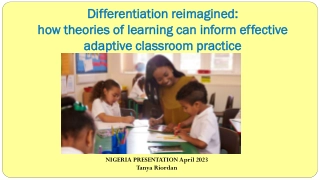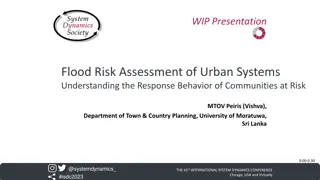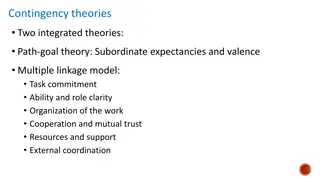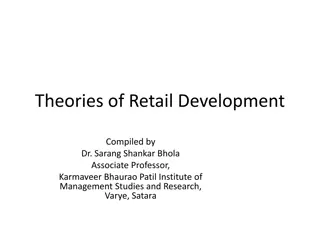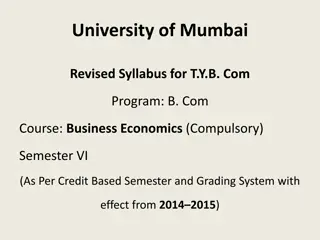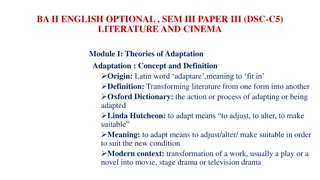Understanding Urban Geography Terms and Theories
Explore key urban geography terms and theories such as Central Place Theory, Cultural Hearth, Formal and Functional Regions, Perceptual Regions, and Topophilia. Gain insights into the spatial arrangement, growth patterns, and cultural origins of cities, enhancing your understanding of urban development.
Download Presentation

Please find below an Image/Link to download the presentation.
The content on the website is provided AS IS for your information and personal use only. It may not be sold, licensed, or shared on other websites without obtaining consent from the author. Download presentation by click this link. If you encounter any issues during the download, it is possible that the publisher has removed the file from their server.
E N D
Presentation Transcript
Terms 11. 12. 13. 14. 15. 16. 17. 18. 19. 20. 21. sprawl greenbelt urban growth boundary infill financialization of housing Great Recession of 2008 slumburbia Great Migration White Flight blockbusting The Great Inversion 1. 2. 3. 4. 5. 6. 7. 8. 9. 10. central place theory cultural hearth formal, functional and perceptual regions topophilia toponym edge cities boomburbs ethnoburbs landscapes of exclusion exurbia
Central place theory Theory that aimed to explain the reasons behind the spatial arrangement, size, and number of towns and cities Developed by the German geographer Walter Christaller in 1933. Assumptions were simplistic, but it was one of the first studies to theorize about the processes of urban geography.
Cultural hearth A heartland, source area, or innovation center; a place of origin of a culture or cultural practice A common example is the domestication of agriculture: there are several cultural hearths around the world where agriculture arose independently Can be applied to many cultural phenomena, not just ancient ones. One of punk rock s cultural hearth s is the Lower East Side of Manhattan. One of rap s hearths is the Bronx is NYC.
Formal and functional regions A formal region may be characterized by human-centered properties, such as a common political system (the United States), or by physical properties, such as a particular landform (the southern Appalachians). A functional region is a defined geographical area centered around a specific feature with a specific function. Trade routes, transportation corridors, or the area served by a shopping mall would be considered functional regions.
A perceptual region is based on the shared feelings and attitudes of the people who live in the area. Perceptual regions reflect the cultural identity of the people in the region. The Bible Belt of the southeastern US is an example of a perceptual region. The South or the North of the USA are perceptual regions. The boundaries of perceptual regions are not always distinct, as they may be perceived differently from person to person. For example, whether one considers Kentucky and specifically Lexington or Louisville to be in the South or the North will vary among individuals. Perceptual regions
Topophilia The affective bond between people and place A strong sense of place, which often becomes mixed with the sense of cultural identity Topophilia also has a darker side, serving as a motive force behind nationalism and social exclusion, and even extending sometimes to the racist celebrations of homelands
Toponymy Toponymy is the study of geographic place names Origins, values and aspirations of residents, recognition of past events, the physical character of a place, as well as literary device can inform the naming of places Naming expresses ownership; it implies legitimacy of the namer s historical and cultural legacy Thus toponymy can be very political and reflect past struggles as well as changes in how history is understood
Edge cities Edge city is a term that originated in the United States for a concentration of urban development outside a traditional downtown or central business district, in what had previously been a suburban residential or rural area. It was coined in the 1991 book Edge City: Life on the New Frontier An edge city is not as suburban or horizontal as a boomburb. An edge city will have taller buildings it is a newer urban core that emerges outside of an older one.
Boomburbs A large, rapidly growing city in the United States (and now in many other countries) that remains essentially suburban in character, even as it reaches populations more typical of urban core cities. They are located outside of a larger urban center that remains the biggest city in their region Often referred to as accidental cities, boomburbs have housing, retailing, and offices, but lack the tall buildings and infrastructural core that resides at the center of older urban areas.
Ethnoburbs Suburban ethnic clusters comprised of residential areas and business districts that have emerged outside of large cities. They reflect what is known as the Great Inversion, the movement of ethnic groups from urban centers to outlying suburbs that were formerly dominantly white
Landscapes of exclusion Cities exist to bring people together, and their design can reflect this But cities may also attempt to keep some people apart Cities deploy arsenals of exclusion and other forms of hostile architecture to manage where people are allowed or where they are excluded These are tactics used by architects, planners, policy-makers, developers, real estate brokers, and other urban actors to make some people feel they belong while others do not and should be excluded
Exurbia The region beyond the suburbs that is rural Less densely developed than suburban areas, this is the leading edge of new housing construction. Sewer and water service may not yet be widely established there Fewer amenities and large commuting times However, it is here that development poses a direct threat to rural livelihoods
Sprawl Typically refers to the unrestricted growth in housing, commercial development, and roads over large expanses of land, with little concern for planning It almost always has negative connotations. It is criticized for causing environmental degradation, auto dependency, urban heat islands, intensifying segregation, and is attacked on aesthetic grounds
Greenbelts, urban growth boundaries, and infill A greenbelt greenbelt is a land use zone designation used in urban planning to retain areas of largely undeveloped, wild, or agricultural land surrounding or neighboring urban areas. The urban growth boundary demarcates this border between developed and conserved land
A greenbelt is intended to increase infill building of new housing in formerly unused land in the city This allows the surrounding greenbelt to retain its less developed character. The apartment built in the backyard of another home is an example of infill. infill, the
Financialization of housing Reflects the expanding role of financial markets and corporations in the housing sector Housing is now treated as a commodity, a means of accumulating wealth for homeowners, but also through financial instruments that are traded and sold on global markets. A mortgage may be a loan that helps buy a home. But investors see a mortgage as a stream of future cash flows. House mortgages become securitized and incorporated into a secondary mortgage market.
The Great Recession of 2008 Caused by the financialization of housing Because mortgages were sold and used in financial speculation, the more an investment firm sold and traded them the more profit As they wanted more mortgage loans to be issued, standards for lending fell. Those of modest income were often offered a subprime mortgage loan, which is also known as an adjustable rate mortgage. No money was needed up front for the mortgage loan, but interest rates could increase over the life of the loan and make the payments balloon. When defaults occurred on these mortgages due to a drop in housing value, the financial markets around the world became unstable and started to fail.
Slumburbia A term for suburbs that are declining into poverty. It was a term that became widely used after the Great Recession of 2008 left wide swatch of suburban neighborhoods abandoned because their owners could no longer afford to make payments These owners were upside down and paying for a house that was worth far less than what they bought it for.
The Great Migration Between 1917 and 1970, more than seven million African Americans left homes in the South to resettle in northern and western states. Once a people of the South, Black Americans became increasingly part of the big cities of all regions and in those urban settings steadily gained political and cultural influence.
White flight Large-scale migration of white people from cities and the first suburbs as they became more racially or ethnoculturally diverse Started in the 1950s and 1960s but has reversed as part of the Great Inversion Rioting in several large American cities in the 1960s hastened the departure of whites as well as many businesses these riots, like those in Newark NJ (right) were in response to decades of racism toward African-Americans
Blockbusting The practice of persuading owners to sell property cheaply because of the fear of people of another race or class moving into the neighborhood, and thus profiting by reselling at a higher price.
The Great Inversion The more recent change in American cities in which whites and older Americans have returned to live in urban centers while ethnic groups have moved out of the city into the surrounding suburbs to form ethnoburbs.


